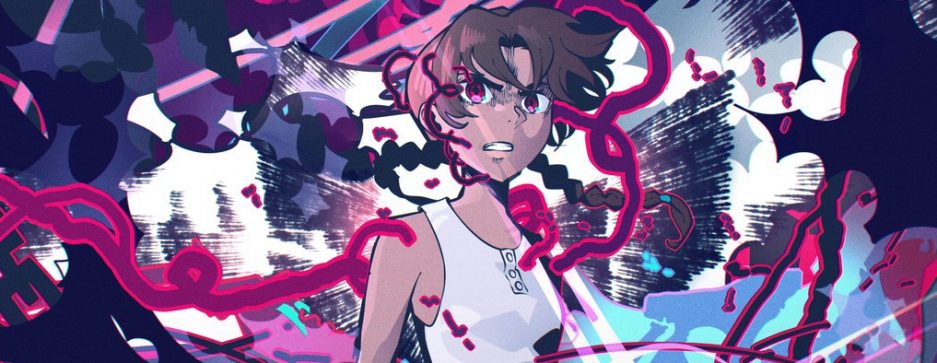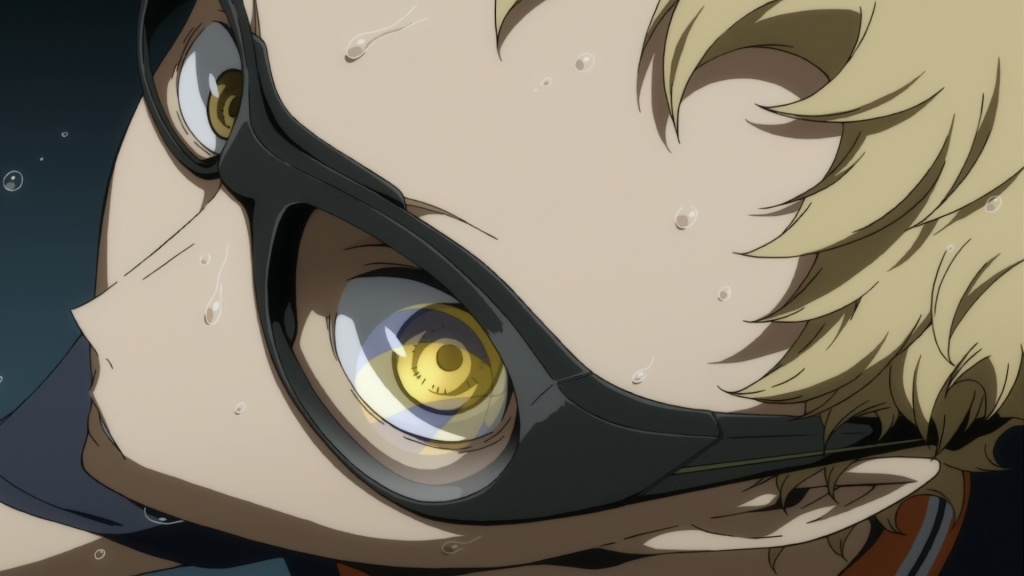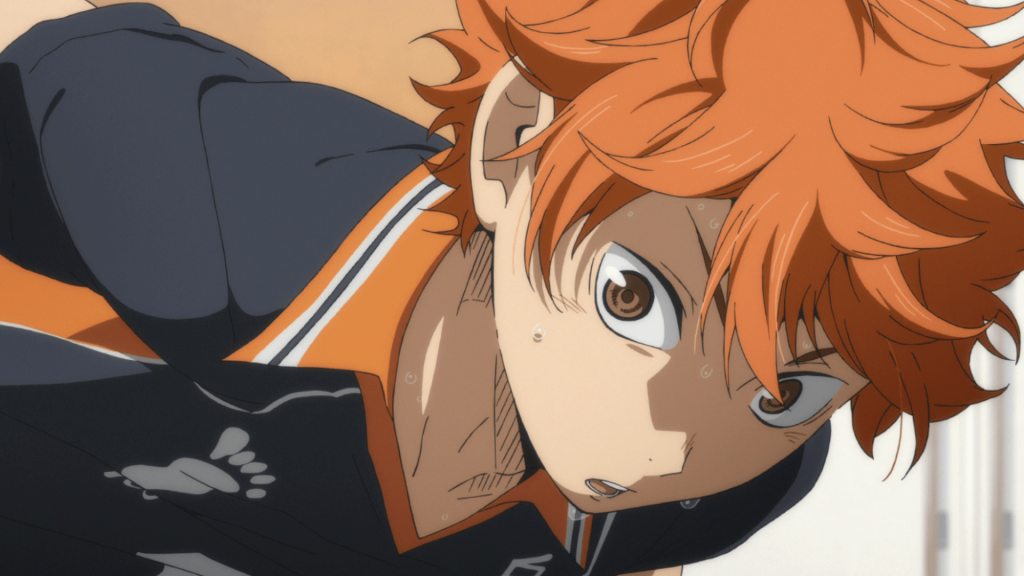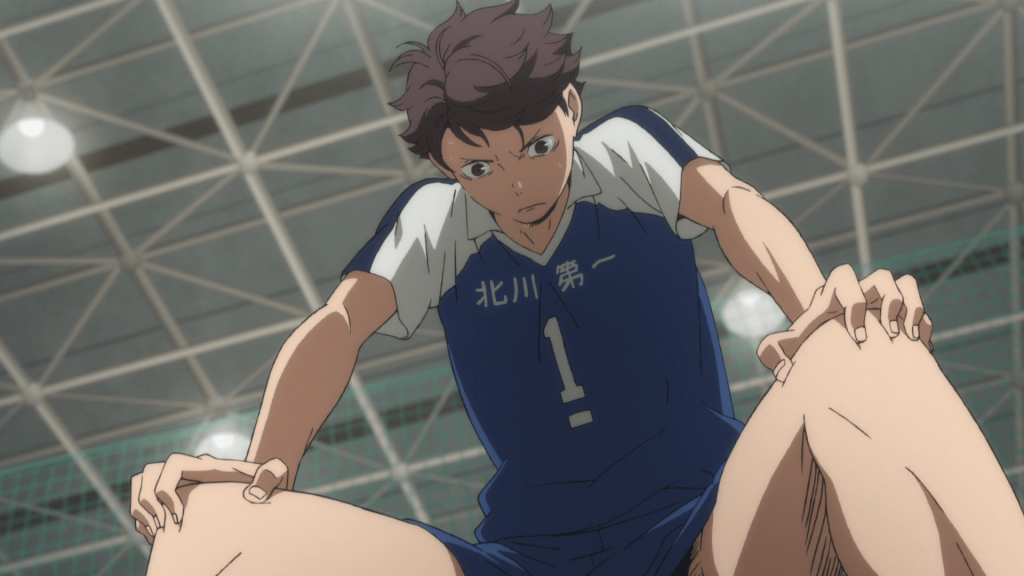Director: Masako Sato (佐藤雅子)
Assistant Director: Mariko Ishikawa (石川真理子)
Character Designer: Takahiro Kishida (岸田隆宏)
Chief Animation Director: Yuu Kobayashi (小林祐)
Action Animation Director: Hideki Takahashi (高橋英樹)

I recently had the pleasure of experiencing Haikyuu!! through animation savvy eyes for the first time and can now credibly claim that the three seasons director Susumu Mitsutaka and his team at Production I.G. were able to produce, stand not only among the peak of sports series, but there’s even an argument to be had for the crown of strongest Weekly Shonen Jump anime adaptation as well. The best part though? Haikyuu!! as a series is wholly deserving of those efforts made by the animation staff. Haruichi Furudate’s manga prides itself on the perfect balance of intense action, professional strategy, candid character moments, and lighthearted humor. It’s through this mix that the boys of Karasuno High School would unsurprisingly capture the hearts of so many fans throughout the years and soar to among the most consistently popular series in Jump magazine.
With all these loudly sung praises it should come as no surprise that news of a staff change for the upcoming season would be immediately met with concern among fans, as how could you possibly go anywhere but down from the triumphant highs of Season 3? Especially knowing that the Director and Chief Animation Director are among the most important positions on an anime staff, and Season 4 will see new faces in each of them.
Perhaps more readily noticeable though, Takahiro Kishida has also altered his character designs to closer match the manga, consequently opting for a more simplified approach which will no-doubt ask less of the animation staff, at the cost of some of the attractively detailed trimmings his old designs carried. Considering that the previous seasons had no visible trouble handling elements like Hinata’s excessively ruffled hair, or the often weighted hatch-mark shading, this is where the main concern comes in.
To gain a better understanding of the context surrounding this production and why a change might be necessary we first need to turn to the two intermediary series which were produced by the same animation teams, Welcome to the Ballroom (2017), and Run with the Wind (2018).
For the better part of a decade now this team at Production I.G. has set the gold standard of sports anime adaptations. Their ambitious approach would be considered suicidal by most other TV productions when it comes to handling uncompromisingly complex designs within settings which will inevitably call for said designs to move by nature of the sport. Sadly though, it’s hard to imagine that an attitude as daring as this is without a shelf life, especially with the progressively deteriorating state of the anime industry. If Welcome to the Ballroom was where the cracks started to show, then Run with the Wind was where the dam nearly burst wide open. The former needed to take a more limited approach, both in its drawing counts but also conserving a number of episodes at the start of the 2nd cour. Meanwhile, the latter had to be taken entirely off-air to replenish the production buffer-time which had all but been spent as the series neared the end of 2018. That the average viewer is unable to tell anything is amiss from the final product, without knowing the behind-the-scenes-context, speaks to the overwhelming talent Production I.G. employs regularly.
With that said, after factoring in the departure of Takahiro Chiba in the Chief Animation Director position, it becomes clear why a different approach should be taken. If the Director is the ace then Chiba can be considered the libero of the staff. Credited on a whopping forty-two episodes, he ensured every drawing met the series’ self-set high standards and would even go so far as to take charge of important scenes himself! His artistry is inseparable from the visual identity of the franchise, and while the design change may not seem ideal at first, consider that this progressive switch will likely yield a stronger end result than if this staff were to try to keep pace without their strongest anchor. Also that may sound like Takahiro Chiba is gone entirely and that isn’t the case, I trust that he will participate in some capacity, just not in the crucial role which is responsible for guiding the overall look of the show!
Filling the role Chiba left behind we find Yuu Kobayashi, a talented individual who has served as a regular key animator for the franchise, but oddly enough has zero experience supervising animation on it; in fact, the vast majority of his career has been key animation-based. While that may sound concerning at first, I’m personally willing to give Production I.G., and by extension Yuu Kobayashi, the benefit of the doubt. Since this unexpected promotion doesn’t seem to be one made out of a total lack of better options (Satoshi Nagura is still around, for example), but rather entrusting an individual whom they’ve known for a long time. Kobayashi’s familiarity with the franchise and its characters will hopefully make up for any lack of experience in the role, and if nothing else we already know his drawing ability is pretty strong!
There’s something to be said of comfort gained through familiarity as well, especially at a time when recent popular series such as One-Punch Man have seen the results that changing creative staffs can bring. A reassuring truth regarding Haikyuu!! is that while former director Susumu Mitsunaka will surely be missed, the series lands in the hands of two capable individuals who should be very familiar with what makes this adaptation special: Masako Sato and her assistant Mariko Ishikawa.
Aside from helming the fun series- Anemiya Yell!, Sato has also directed a handful of episodes for the franchise, and perhaps more notably for fans, was responsible for processing Shingo Natsume’s storyboard for the Season 3 OP – Hikari Are! ie. the best opening. (I wouldn’t blame you for disagreeing since it’s mostly really tough competition!)
Meanwhile, Ishikawa has Hideki Takahashi’s solo-animated outing of season 2 under her belt, though as wonderfully handled as that episode is, her strengths are definitely more animation-focused by choice- a noteworthy trait shared not only by both of these new directors, but similar to Mitsunaka previously as well. With that in mind, as far as general production philosophy and priorities are concerned, I wouldn’t expect any groundbreaking changes.
Though part of me is hoping to see Sato and Ishikawa take on a completely different direction, as risky as that sounds. Female directors are tragically under-afforded opportunities in this industry and I can think of few more suitable series for their talents, especially within its demographic, than the character-driven Haikyuu!! That’s not to say that previous seasons didn’t nail the dramatic character moments either, because they certainly did in their own way. However, with Haikyuu!! itself already serving as a breath of fresh air amidst a fairly stagnant genre, the prospect of potentially adding even more new perspective should be a welcome one.
Ultimately, change in any form will often be met with anxiety, especially in cases where nothing was broken. I would be lying if I said I won’t miss the old designs, and my gratitude for what Susumu Mistunaka was able to accomplish over three seasons and a handful of OVA’s is unending. (Hopefully we might see him participate in some capacity on the new season as well!) I trust Masako Sato fully though, and with the number of notable key animators already confirmed, paired with the more animation friendly designs, there’s good reason to believe that much like its title suggests, Haikyuu!! Season 4 can indeed soar to the top.








Can you explain the “behind-the-scene context” the Run with the
Wind team had to deal with and that lead to the conservative last episodes?
Perhaps my wording was a bit confusing but it was Welcome to the Ballroom which needed the limited approach and conservative efforts to keep the production afloat in the later stages.
Run with the Wind was instead taken completely off-air, the team had used up all their buffer and came close enough to not finishing episodes on time that they had to bargain for a broadcast break to get back ahead. This sadly happens more often than it should these days, Azur Lane is a prime example.
Love this article! Great insight and definitely explains what I think is a premiere episode that was a little rough around the edges. Can I ask where you got the information that the character designs were changed not only to better match the manga but also to make them easier to animate?
Those are both observations. Simply by comparing you can see they more closely resemble Furudate-sensei’s manga style now, and additionally they will be easier on the animation staff since so many complicated design elements have either been removed or toned down. The hair is a major one, Haikyuu seasons 1-3 maintained ridiculously detailed hair, often having individual strands or pieces animated independently and with respect to the body movements. https://i.imgur.com/hpiEIEkl.jpg <- this comparison is probably the easiest to see how they differ. Season 4 treats the hair closer to a single solid unit, in Azumane's case especially, thus making the job of the clean-up animators much easier. In addition, the shading around the neck especially has been dialed back a lot, and that's another thing which animators spend a lot of time on since when a character moves, the shading has to move appropriately! Without being the director myself I can't say for sure why the change was made, and perhaps I should have made that more clear. But the overwhelmingly most likely reason is found in the changing of the core staff, as well as keeping the manga direction in mind.
thank you for this very good article. Your work is appreciated and so is the work of the people involved in creating this beautiful anime.
Thank you for the kind comment, glad you enjoyed! ^_^